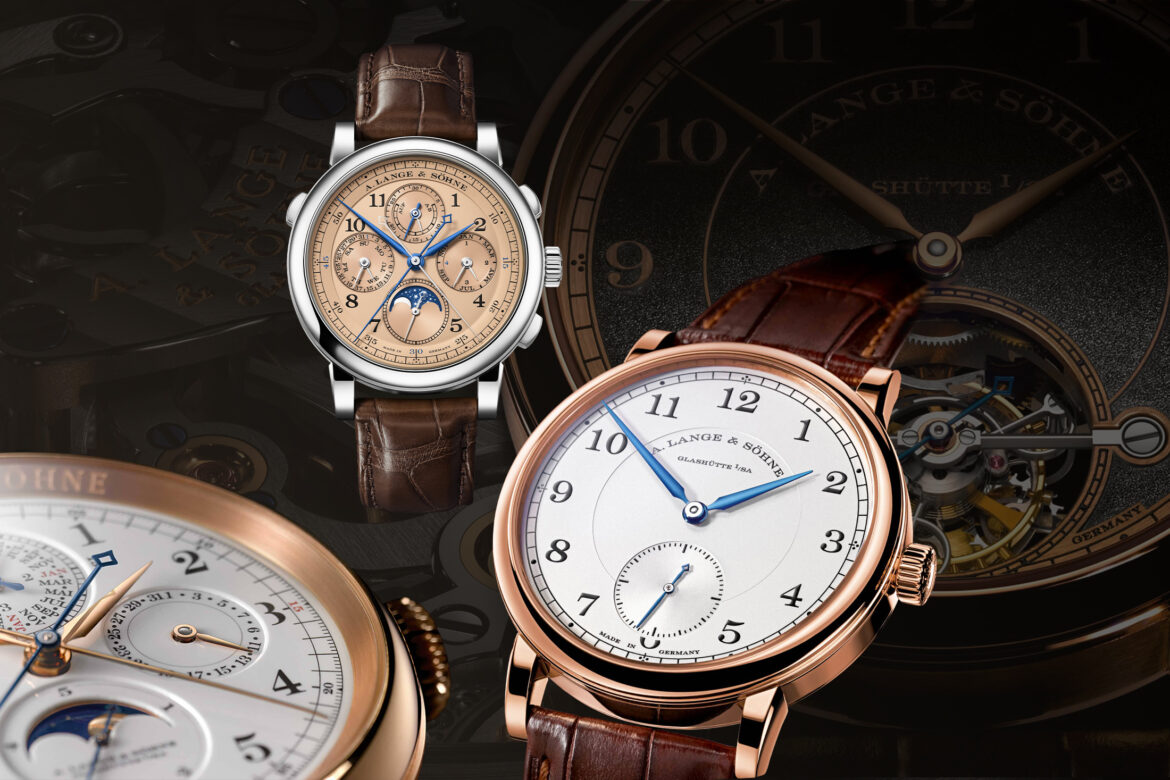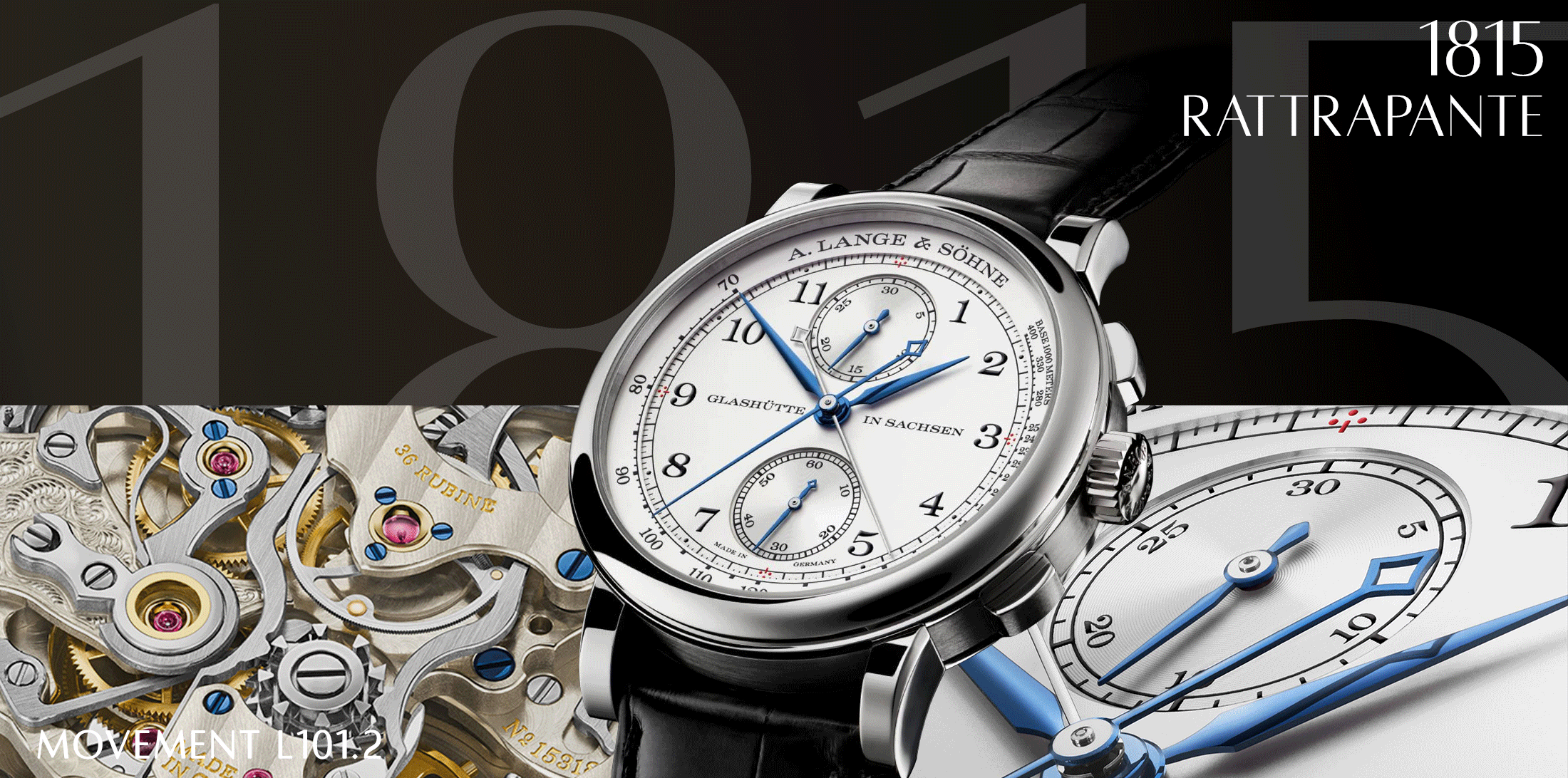Three decades after the launch of A. Lange & Söhne’s 1815 collection, we revisit the standout timepieces in the evolution of this signature watch family
Tradition and innovation can co-exist, evident in the evolution of A. Lange & Söhne’s iconic 1815 watch collection. The collection is aptly named after the birth year of founder Ferdinand Adolph Lange, bringing into focus his watchmaking principles including meticulousness and perfection.
The character of the 1815 collection is defined by a precise movement, meticulously constructed, with traditionally implemented classic complications. Manually wound except for the 1815 Automatic, the collection has seen bold moves in the use of materials, and the combination of complications. Yet, it remains true to its origins and design codes referencing Lange’s historic pocket watches, such as the three-quarter plate made of untreated German silver, screws blued at 300°C, screwed gold chatons, and the hand-engraved balance cock.
Here’s a closer look at the standout models of the 1815 watch family since its inception.
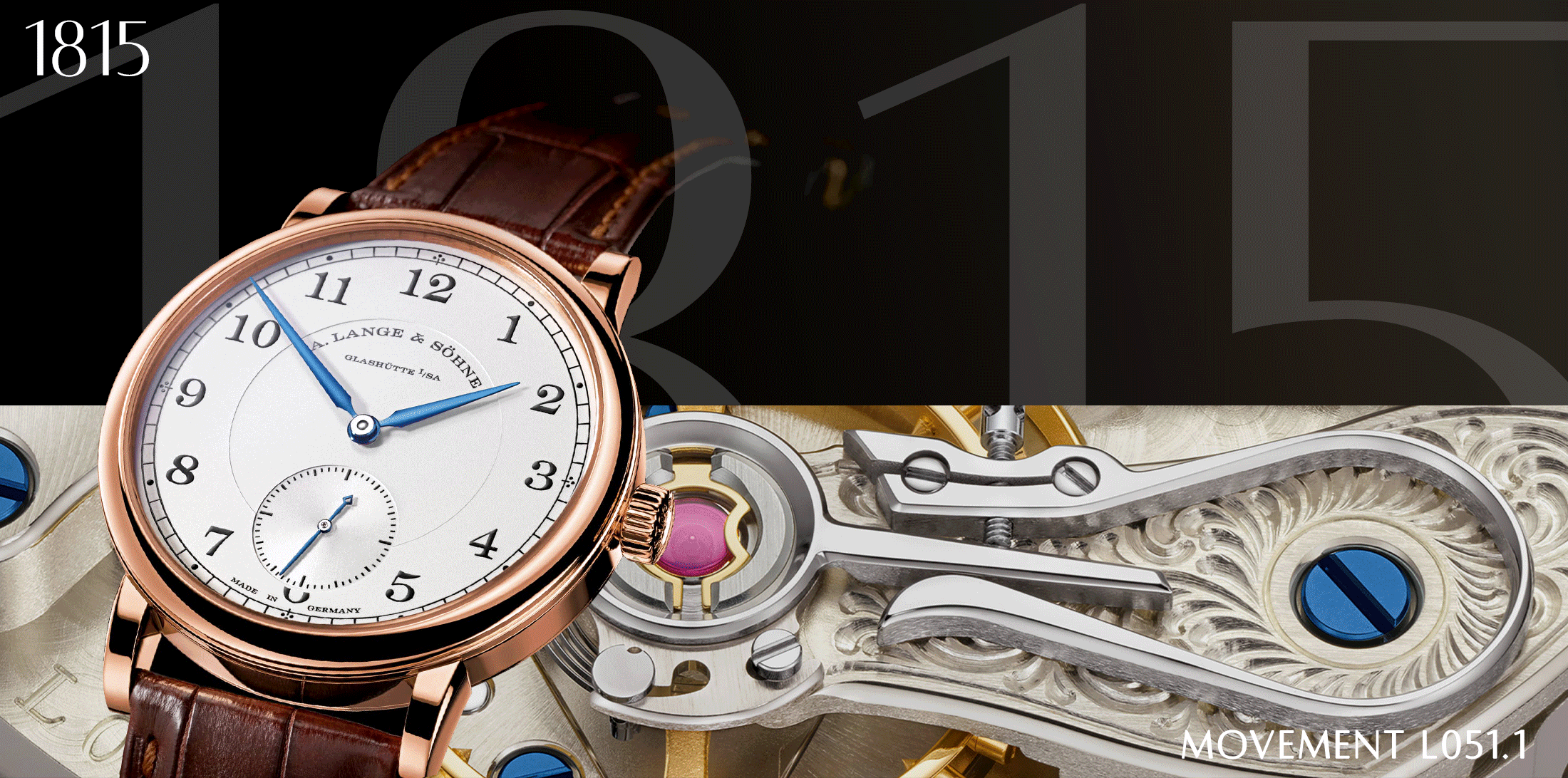
The eponymous 1815 launched in 1995, a year after what is strictly speaking, the first watch of the 1815 family – the Tourbillon “Pour le Mérite” with the first of its kind musée-and-chain mechanism that fascinated the world.
The 1815 has a quiet allure – its graceful lines speaking of refined elegance. The three-hand mechanical wristwatch has its roots in the classic Lange pocket watches: a railway-track minute scale, Arabic numerals and subsidiary seconds dial at six o’clock.
The first generation of the 1815 was powered by the manually wound calibre L941.1 housed in a 35.9mm case in yellow gold or platinum. The beating heart of this classic was replaced by the newly developed L051.1 movement, bringing its power reserve up to 55 hours from 45. But its characteristic clean lines remained.
Since its debut in 1995, the 1815 has welcomed another 14 references. In 2015, the brand launched the celebratory “200th Anniversary F.A. Lange” editions in platinum with a black dial, and proprietary HONEYGOLD® with an Argenté-Grainé dial. Two years later, a special cuvette edition commemorated the tenth year of A. Lange & Söhne’s first boutique in Dresden.
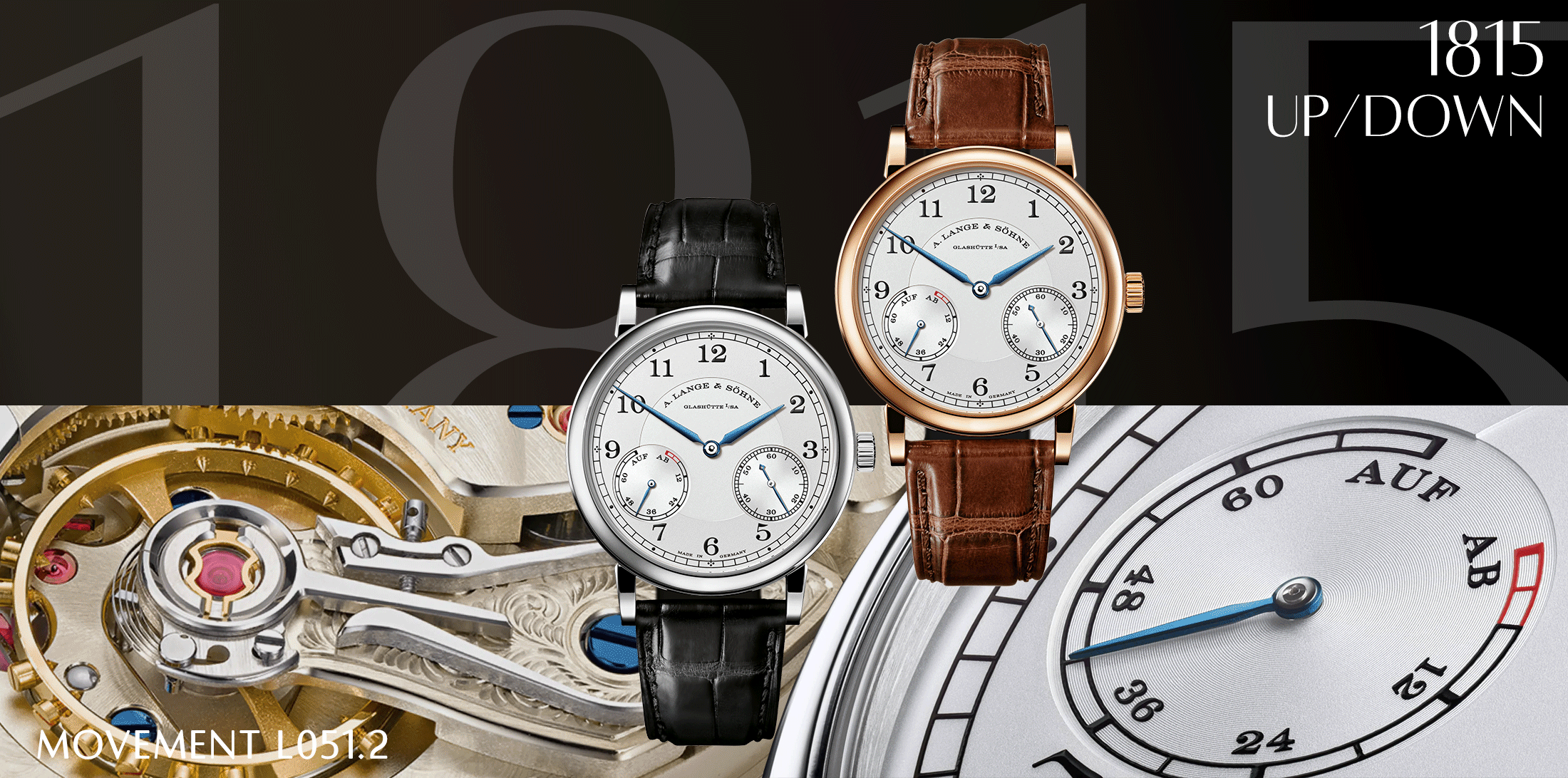
The 1815 UP/DOWN, first released in 1997, reinforces the brand’s origins. The key feature is an UP/DOWN power-reserve indicator positioned at eight o’clock, and level with the subsidiary seconds dial at four o’clock. Like that on historic pocket watches and marine chronometers, UP stands for fully wound and DOWN for the unwound mainspring barrel.
What’s worth highlighting here is how the 1815 UP/DOWN integrates the display directly into the confined space of the movement by using a specially designed planetary gearing based on a 1940 patent granted to Otto Lange, the founder’s grandson. This means a slimmer silhouette and proportions that align even more with the character of the 1815 watch family.
When the second generation of the watch emerged in 2013, it was equipped with a new calibre – the L051.2, boosting its power reserve from 45 to 72 hours. The crown and ratchet wheel integrated into the three-quarter plate and decorated with solarisation is observed through the caseback, yet another reference to Lange’s historic pocket watches.
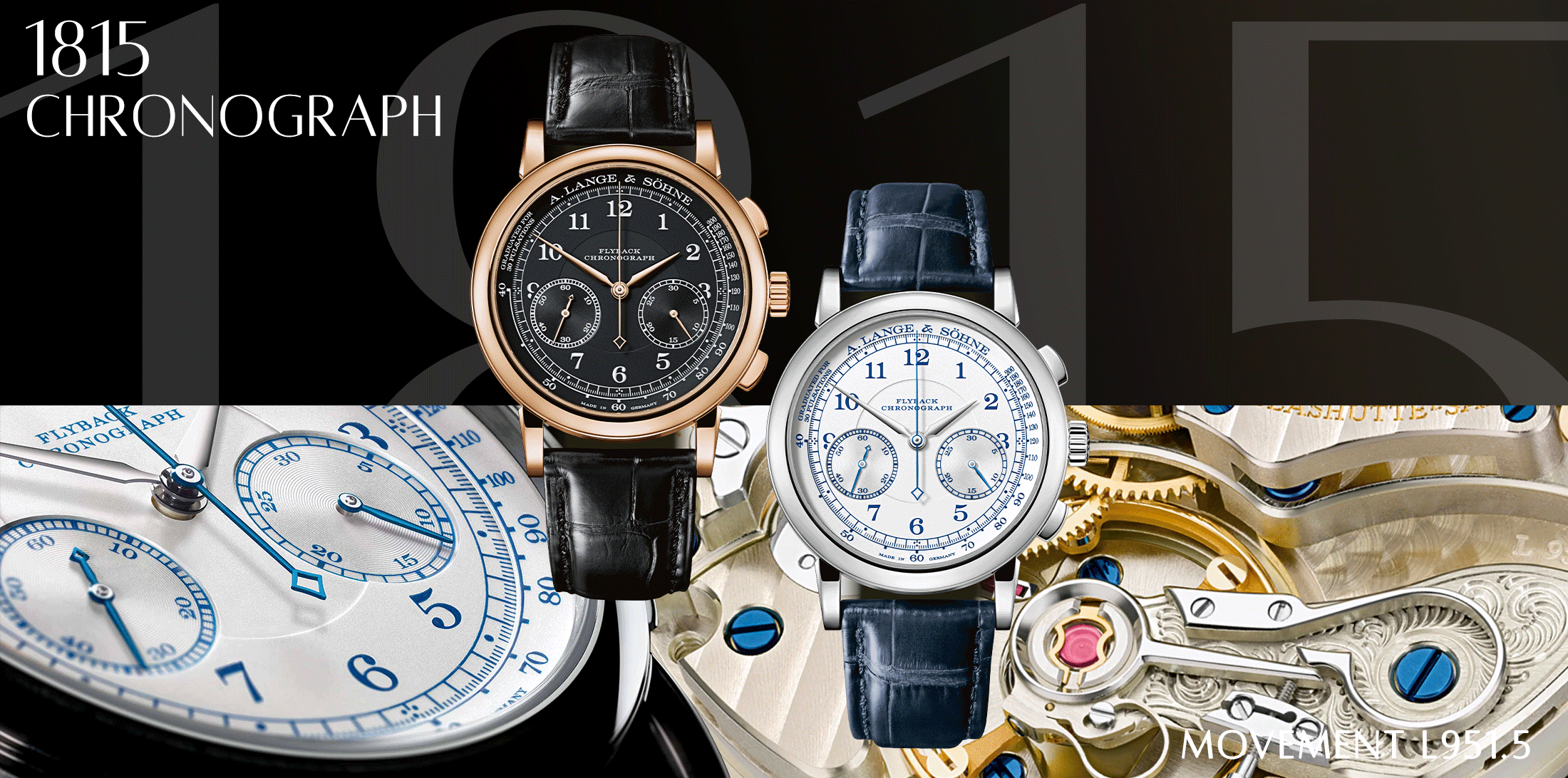
Tradition meets technology in the 1815 Chronograph. Launched in 2004, it became the first in the 1815 watch family to incorporate the proprietary chronograph calibre L951. This legendary calibre, introduced in 1999 in the Datograph, had become the new benchmark for manufacturing chronographs with its classic ratchet controls, flyback function and precisely jumping minute counter.
The movement was updated in 2010 to the L951.5 with an improved power reserve of 60 hours, and proprietary Lange balance spring. Then, from 2015 onwards, a pulsometer scale on the outer ring of the dial, as seen in the first model, became one of the defining features of this timepiece.
Cutting edge technology aside, tradition comes alive in the 1815 Chronograph. The modern timepiece features an efficient dial layout, much like the manufactory’s historic pocket watches. Its two subsidiary dials are positioned slightly below the horizontal centreline along with the characteristic railway-track minute scale.
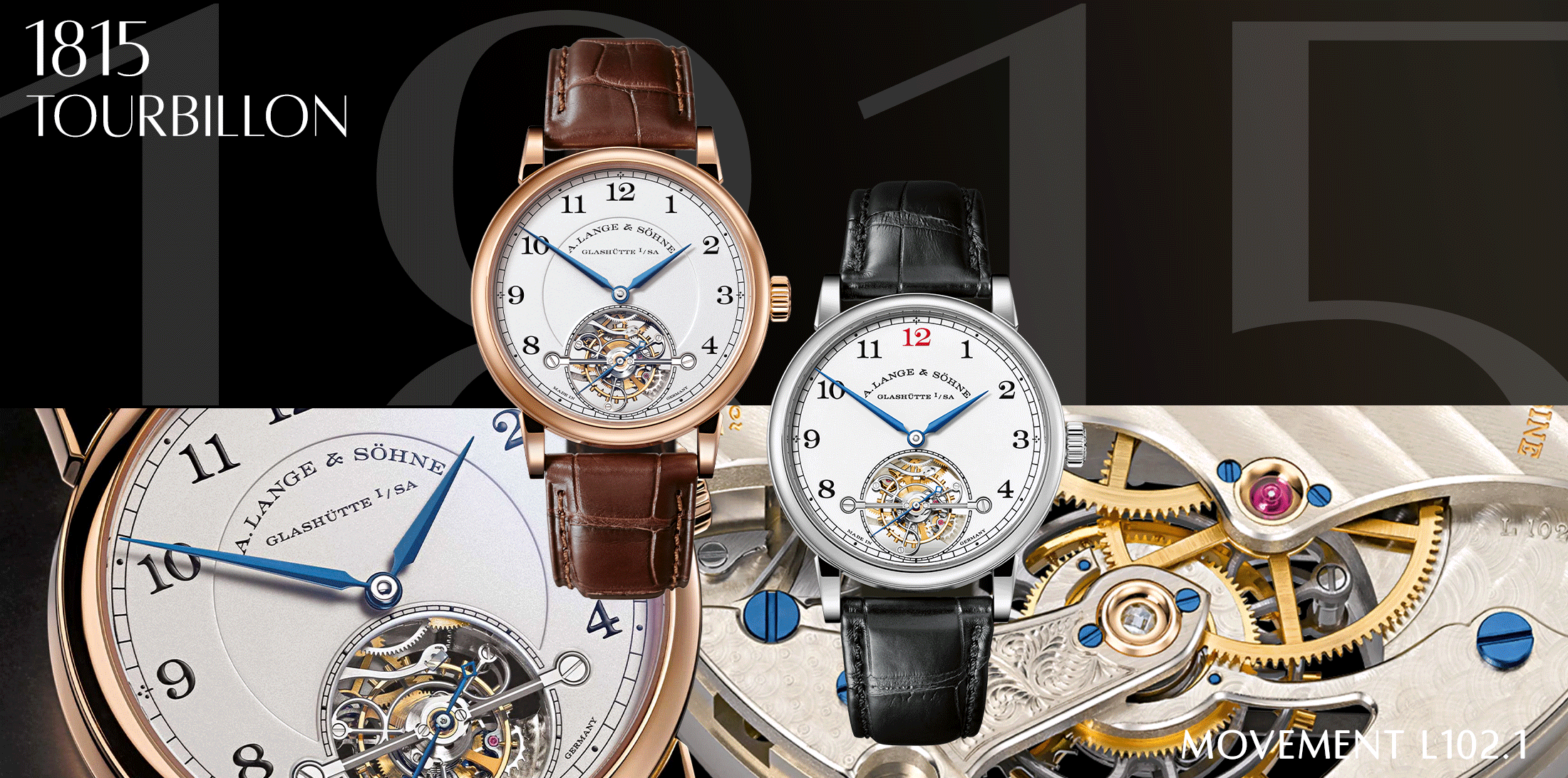
The launch of the 1815 Tourbillon in 2014 marked the first time A. Lange & Söhne combined two patented mechanisms to allow for time-setting at will, with accuracy down to the second. At the pull of the crown, the stop-seconds device stops the balance inside the tourbillon cage, while the ZERO-RESET time-setting function springs the seconds hand back to the zero position.
Like the rest of the 1815 watch family, the dial here retains typical design elements of the 1815 watch family that recall the brand’s historic pocket watches. The caseback reveals the three-quarter plate with a grained surface like those found on historic Lange pocket watches, and a special feature that is the chamfer polish on the sharp-angled inner corners, an effect achievable only by hand with a dedicated tool.
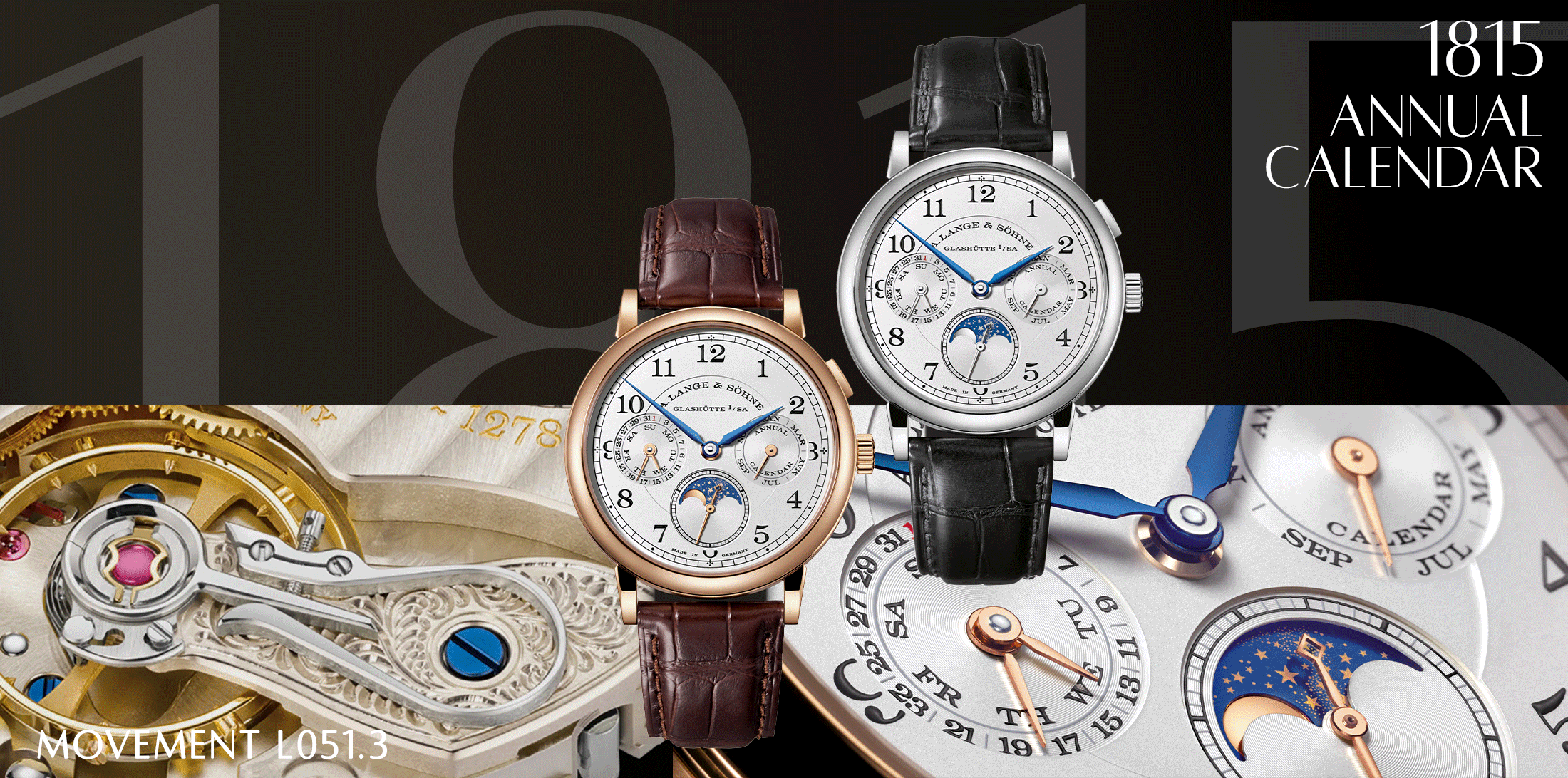
Launched in 2017, the 1815 Annual Calendar was designed be an everyday watch. With this in mind, it had to ensure wearability and functionality come together. It’s easy to imagine it as a daily companion, with its compact silhouette that manages to house its impressive functions.
True to the classic construction and design principles of the 1815 watch family, it features a manually wound movement and analogue date analogue displays for the date, day of week and month as well as a moon-phase display calculated to remain accurate for 122.6 years. Thanks to a mechanism that automatically recognises which months have 30 and 31 days, the date display needs only to be adjusted annually when the last day of February transits to the first day of March.
The manual winding train used here is an ode to Ferdinand Adolph Lange, who developed the winding crown – patented in 1866 in the USA – to replace key-operated winding works commonly used until this time.
1815 Rattrapante Perpetual Calendar
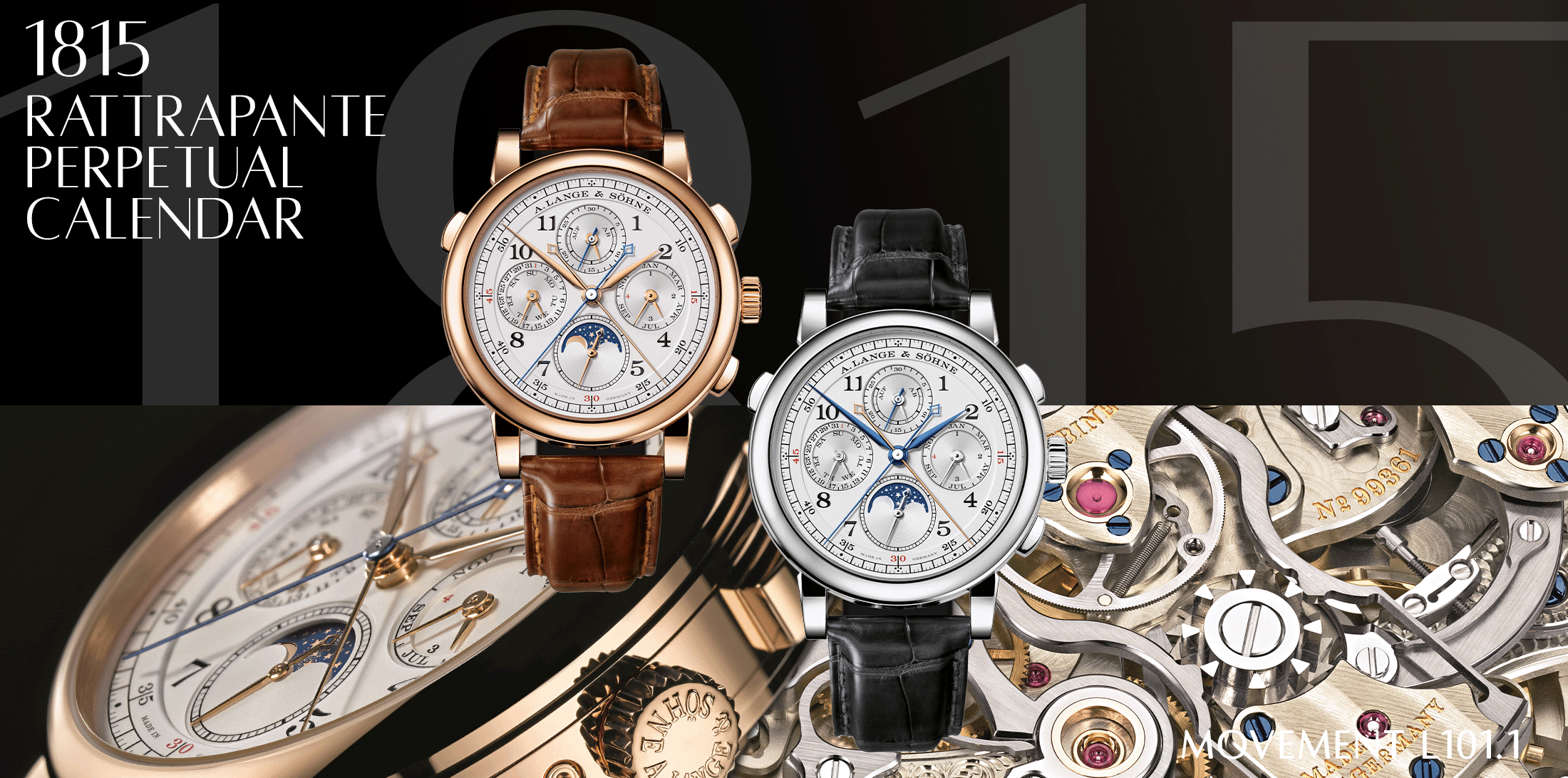
The 1815 Rattrapante Perpetual Calendar, first launched in 2013, unites three of the most challenging watchmaking complications while retaining the elegant simplicity of the watch family it belongs to.
In particular, the rattrapante function measures intermediate times and comparative times, along with determining minimum and maximum values in the course of one minute. Because the balance wheel of the specially developed manufacture calibre L101.1 beats with six semi-oscillations per second, stopped times can be recorded with an accuracy of one sixth of a second. The additional graduation on the peripheral minute scale ensures highly precise readings.
What’s even more impressive is the perpetual calendar mechanism that accurately relays the varying lengths of the months over a calendar year, including all leap years up to 2100. In addition, the moonphase display, so closely emulates the duration of the synodic orbit of the earth’s satellite that it would remain accurate for 122.6 years.
Then came the 1815 Ratttrapante, first launched in 2020 in proprietary HONEYGOLD®, as one of three special editions as an “Homage to F. A. Lange”, on A. Lange & Söhne’s 175th anniversary. The limited edition of 100 pieces saw two important firsts. In terms of material, it was the first time the brand paired a HONEYGOLD® case with a black dial made from solid silver. And perhaps more significantly, this was the very first time the split-seconds chronograph allows the stopping of intermediate times. Two years later, the 1815 Rattrapante came in another limited edition of 200, in a platinum case.
Aligned with Ferdinand Adolph Lange’s specifications for inimitable movements, the calibre L101.2 features raised German-silver frame parts with grained surfaces that recall his grade 1A historic pocket watches. A modern touch comes in the form of the black rhodiumed hand-engravings on the balance cock and the chronograph bridge, resulting in a more three-dimensional effect – a move that exemplifies the manufactory’s aspiration to never stand still.
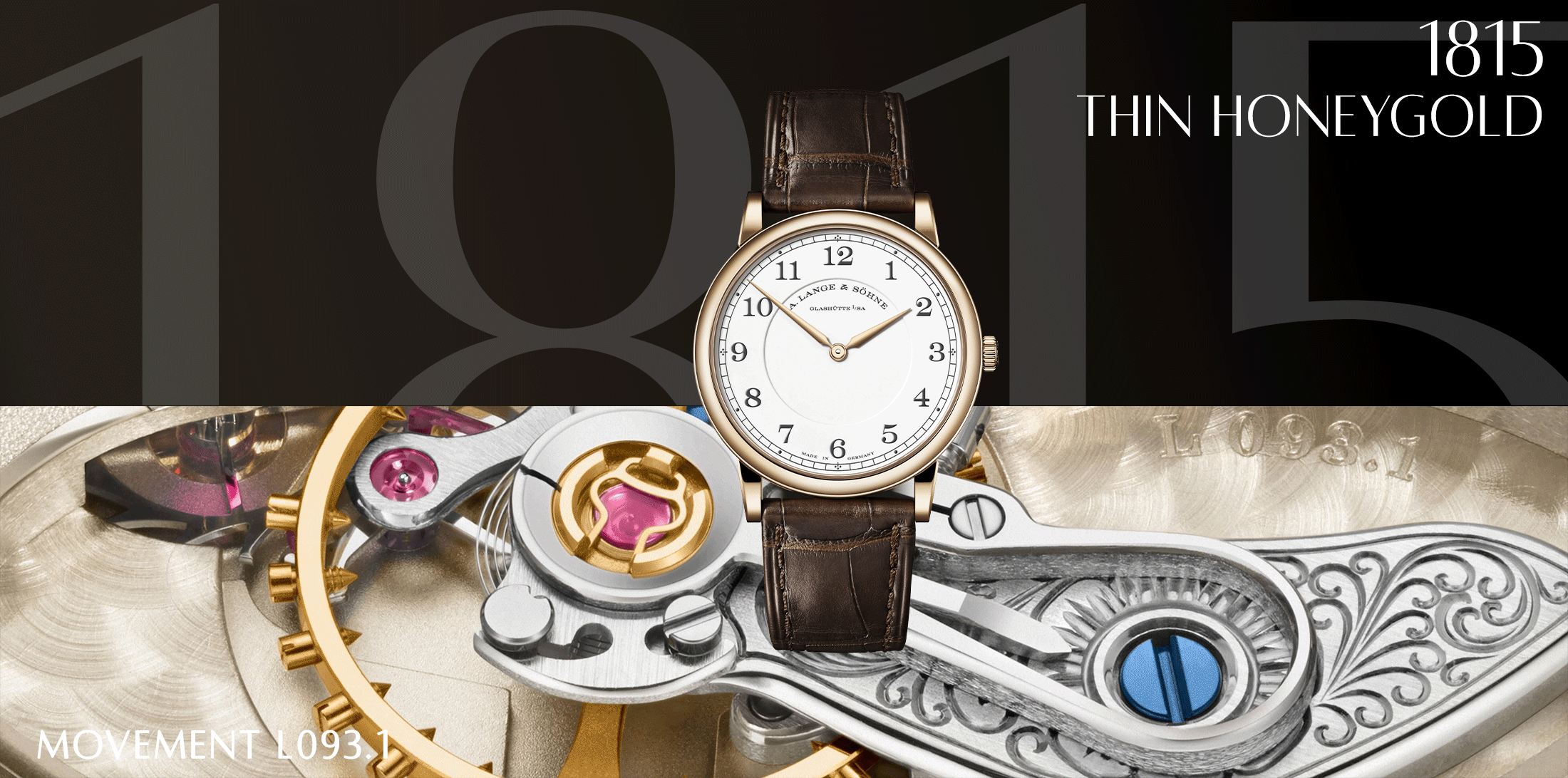
The 1815 Thin Honeygold limited edition of 175 watches, is part of the trio launched in 2020 as part of the “Homage to F. A. Lange” series. Two hands tell the time with Arabic numerals in dark grey against a white enamel dial, enclosed in an exclusive 38mm HONEYGOLD® case. The watch is slim at 6.3mm, embodying the hallmarks of perfection and clarity.
As an homage, special movement decorations seen on historic Lange pocket watches are also found in the 167-part manufacture calibre L093.1. The three-quarter plate has a granular surface instead of Glashütte ribbing, while the crown wheel and ratchet wheel are visibly integrated in the train bridge and decorated with circular graining. In addition, the fine lines of the hand-engraved floral pattern on the balance cock are black rhodiumed, the dark hue echoing the grey of the imprinted dial elements.
1815 Tourbograph Perpetual “Pour le Mérite”
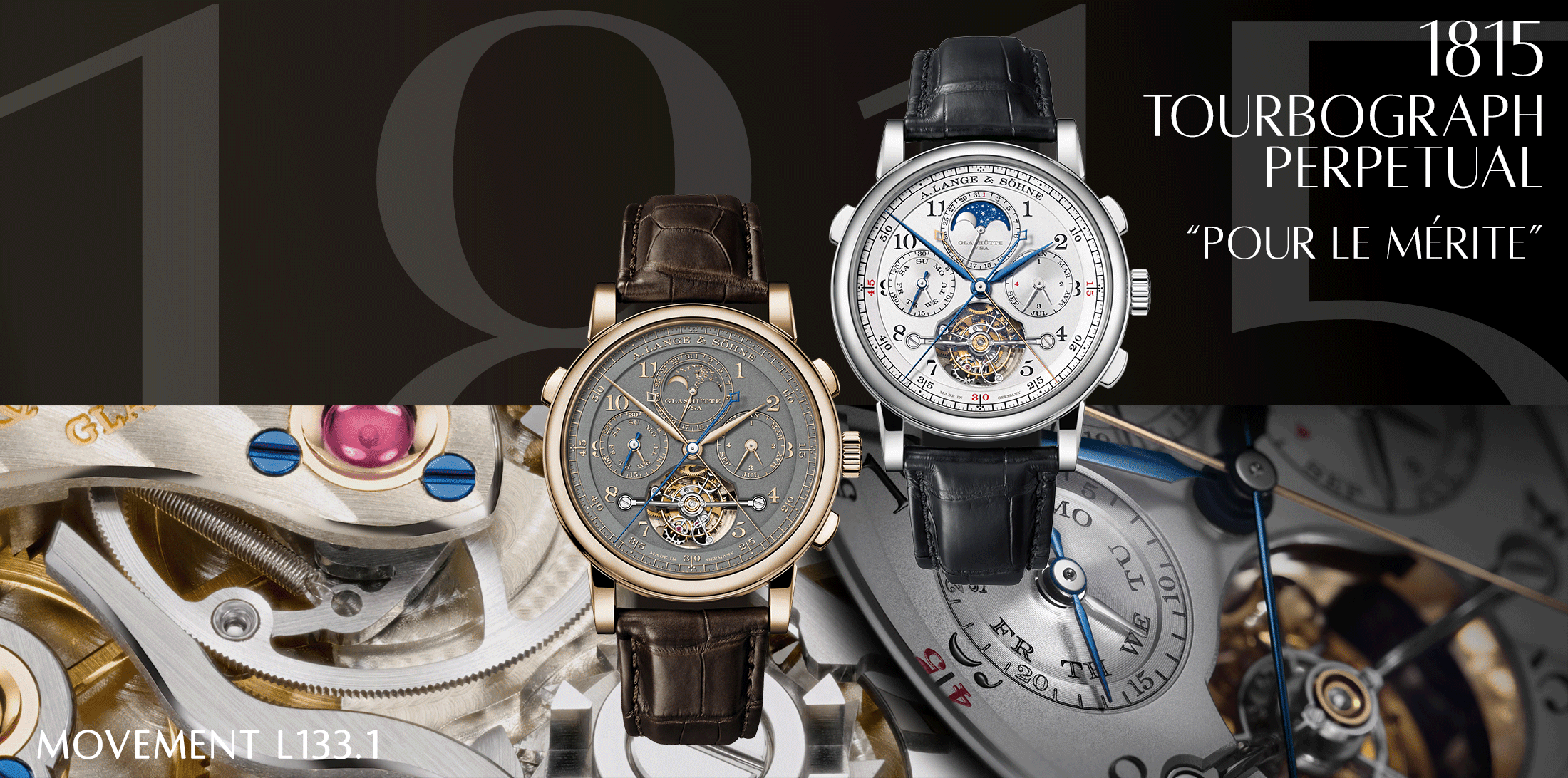
The Tourbograph Perpetual “Pour le Mérite” unites a fusée-and-chain transmission with a tourbillon, chronograph, rattrapante and a perpetual calendar for the first time in 2017. One of the greatest challenges here was how to integrate the perpetual calendar around the tourbillon without mechanical conflict or unnecessary energy loss.
Another feat was the complex L133.1 movement composed of 684 parts, one of which is the chain. One of the most effective complications to increase the rate accuracy of a mechanical watch, the fusée-and-chain transmission works like an infinitely variable gearbox that equalises the waning force of the mainspring, ensuring that the movement receives a constant amount of energy.
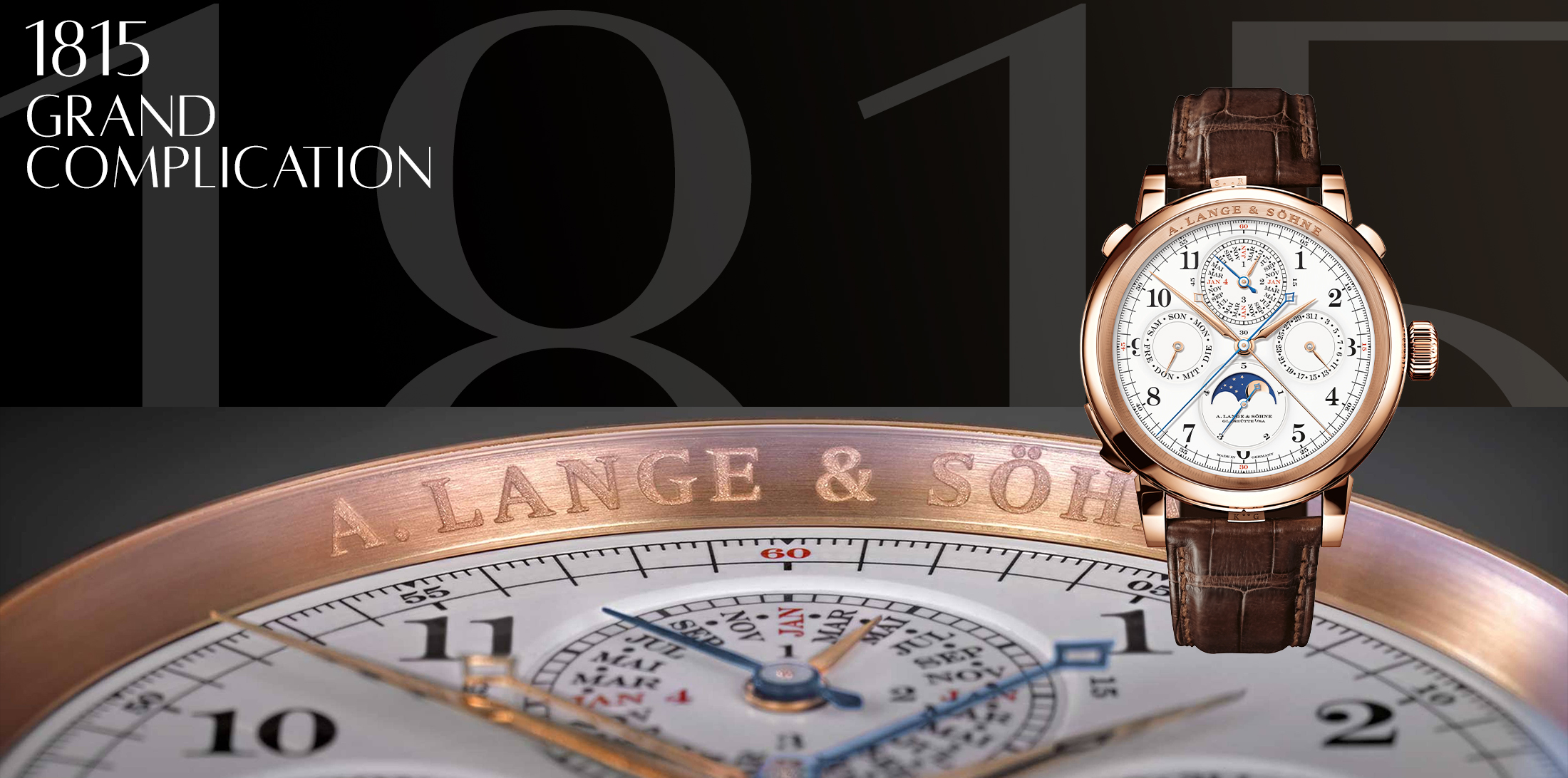
In 2013, A. Lange & Söhne launched the Grand Complication, also known as the most complicated wristwatch the manufactory has ever made, and the most exclusive, sophisticated wristwatch ever made in Germany. This development propelled A. Lange & Söhne to the top ranks of precision watchmaking.
Limited to six watches, the mechanical masterpiece housing calibre L1902 took inspiration from a pocket watch from 1902 – the Grande Complication No. 42500. Under the five-part enamel dial, are the meticulously finished individual parts: a striking mechanism with grande and petite sonnerie, a minute repeater, a rattrapante-chronograph function with minute-counter hand and flying seconds, and a perpetual calendar with moonphase display. Remarkably, all the displays are changed at exactly midnight.
Riding the constant forward motion of the passing of time, A. Lange & Söhne presses on, never standing still. In the case of the 1815 collection, it’s also shown us that tradition and innovation can go hand in hand to open new doors of possibilities in the world of haute horlogerie.
Images courtesy of A. Lange & Söhne, artwork by Curatedition, all rights reserved.
Related links:
A. Lange & Söhne: Splitting Time
A. Lange & Söhne: Zeitwerk Powers Up
Grand Lange 1: In Pursuit of Refinement

